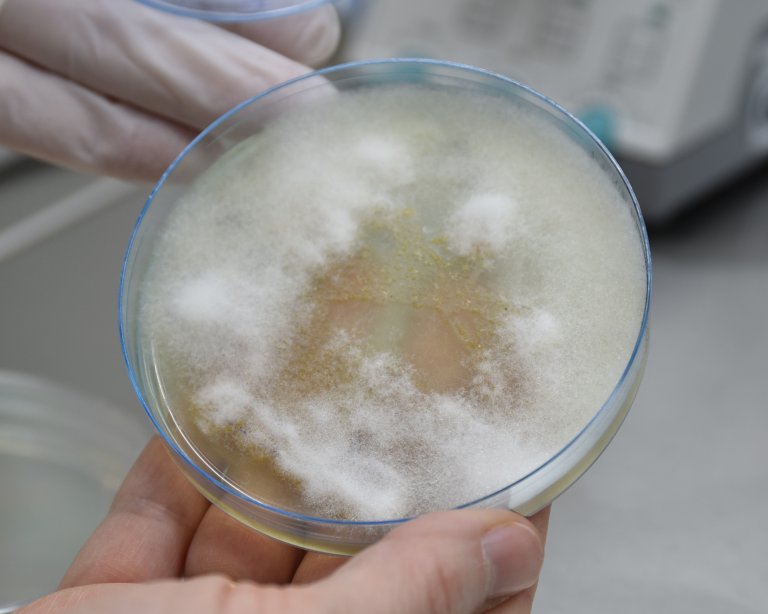
Pathogen and Transmission
Species in the genus Saprolegnia (family Saprolegniaceae, phylum Oomycota) are typically considered saprophytes, breaking down dead organic material. However, certain species are capable of infecting live fish and eggs. Saprolegnia parasitica is most commonly associated with disease in fish, while Saprolegnia diclina is the primary cause of infections in eggs. Other Saprolegnia species are also isolated from diseased fish and eggs but are generally less pathogenic.
Saprolegnia species are naturally present in most freshwater sources and spread via motile spores known as zoospores. Hatcheries and juvenile fish facilities can become infected through intake water. The spores are relatively resistant, and common water treatments such as UV filtration and ozone are not sufficiently effective to eliminate them.
Furthermore, Saprolegnia spp. have been shown to produce spores in pipes and tank systems without infecting fish or eggs, likely by forming or participating in biofilms and utilizing settled organic matter as a substrate. This can significantly increase infection pressure.
The water mold typically requires a weakened host immune system to establish infection, often due to stress or damage to the skin or mucus layer.
In incubating eggs, the presence of dead eggs is a prerequisite for saprolegniosis to develop.
Clinical Signs
Saprolegniosis has likely been recognized for centuries, due to the characteristic white cotton-like fungal growth (mycelium) that appears on infected fish.
Infections usually begin in unscaled areas, particularly the head and gill covers, then spread along the back toward the adipose fin and fin bases. In affected areas, the hyphae invade the epidermis, dermis, and hypodermis, and in severe cases, may penetrate into the underlying muscle.
Degenerative changes and skin necrosis impair osmoregulation, which in serious cases can lead to death. Infections on the gills can impede respiration, causing the fish to die from asphyxiation. Recent observations suggest that Saprolegnia species may be more pathogenic than in the past.
Spores cannot establish infections on live eggs. However, they colonize dead eggs and other organic debris. Hyphae grow from these initial sites and can spread to adjacent live eggs, penetrating and killing them. This results in a fuzzy veil that envelops affected eggs.
Diagnosis
Diagnosis is usually based on visible macroscopic lesions.
The Norwegian Veterinary Institute diagnoses saprolegniosis and identifies the species (Saprolegnia spp.) through culture and DNA sequencing.
Occurrence
In Norwegian aquaculture, saprolegniosis has mainly been a problem during egg incubation. However, outbreaks have also been seen in fry and parr, especially following vaccination. Other countries with salmonid aquaculture—such as Chile, Canada, and Scotland—report significant economic losses due to saprolegniosis. The infection may occur throughout the entire freshwater phase.
In wild fish, saprolegniosis is particularly observed in mature individuals around spawning time, often in conjunction with environmental stressors, other diseases, or parasitic infections. In aquaculture, infections can occur during the freshwater stage and in broodstock transferred to freshwater before stripping.
Control Measures
Until 2000, the disease was effectively prevented and controlled with the organic dye malachite green. However, due to its carcinogenic properties, malachite green has been banned in aquaculture—first in the U.S. and later worldwide. This ban has led to the reemergence of saprolegniosis as a problem, since no equally effective alternatives currently exist.
Formalin remains the most cost-effective treatment and is generally the first choice for managing outbreaks. However, its use in aquaculture is controversial and currently under review within the EU system. Restrictions or bans on formalin use for treating parasites and water molds in fish may be introduced in the coming years. This makes preventive measures even more crucial.
Key preventive strategies include minimizing stress and handling the fish gently during necessary procedures such as sorting, transferring, and vaccination. Maintaining good hygiene and water quality is essential to prevent spore buildup in the facility’s water system. During egg incubation and hatching, removing dead eggs and organic debris is the most important preventive measure.
